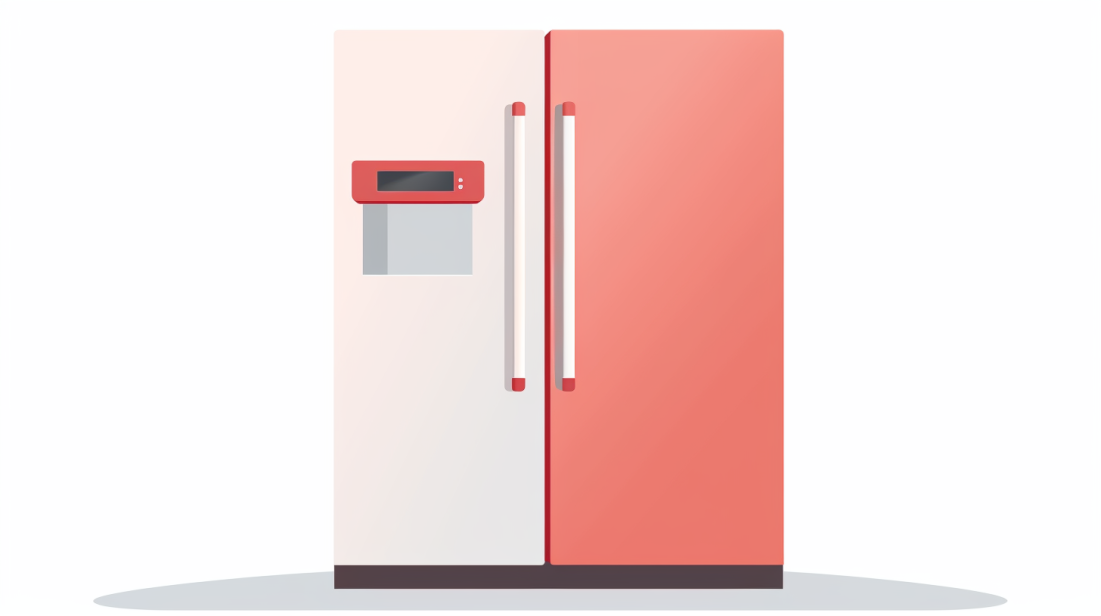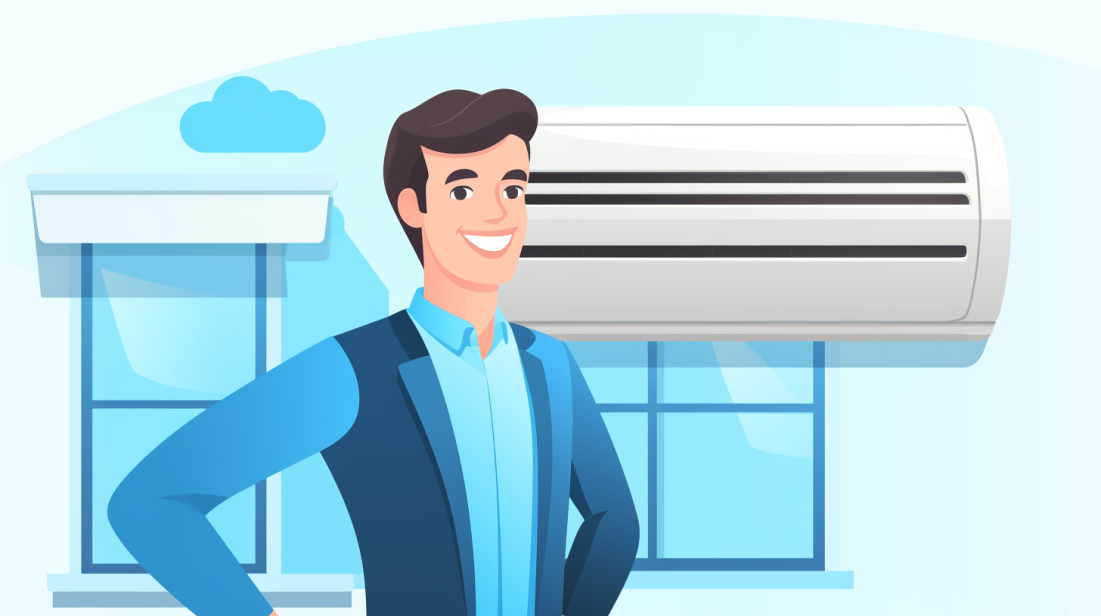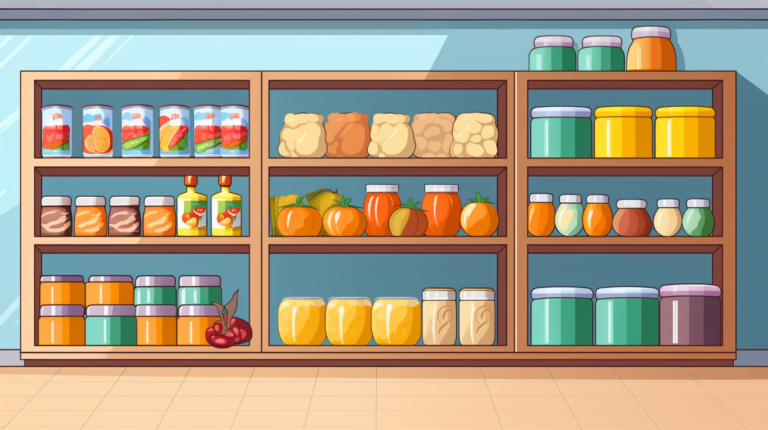Home Renovations that Save Money in the Long Run

Home renovations can feel like a monumental undertaking, right? Fear not. Speaking from experience, having navigated through two budget-conscious kitchen makeovers in the last three years alone, I’ve discovered that penny pinching doesn’t have to equate to sacrificing quality or style.
This blog is your roadmap to some thoughtful home improvements designed not only elevate efficiency but also yield long-term savings. So, are you ready to embrace these economical renovation strategies? Let’s jump right in!
Key Takeaways
- Making your home energy – smart can save you money every month.
- Insulating the water heater, attic and sealing window leaks help cut costs.
- Installing smart thermostats controls temperature and saves power.
- Changing to LED light bulbs, wrapping up water lines, using new fans lower bills.
- Getting a new fridge is better for money saving in the long run.
- Big trees outside your house give shade and cool down the place.
The Importance of Energy-Efficient Home Renovations

Saving energy is good for our planet and it also saves money! Home renovations can help reduce utility bills. I insulated my attic from R-11 to R-49 and guess what? It saved me around $600 in cooling and heating costs each year.
Isn’t that great?.
An energy-saving home is not just about cutting electric or gas use though. Water lines, when bundled up with insulation, have brought down our heating costs by 3% to 4%! So don’t wait any longer! Look for ways to save energy at your home too! The best part – some of these upgrades might fetch you tax credits or rebates as well.
Indoor Home Improvements that Save Money

Energy-efficient renovations can often start at home. Insulating your water heater can significantly reduce heat loss and utility costs. Smart programmable thermostats aren’t just convenient – they’re cost-effective too, adjusting to your routines and helping save on unnecessary heating or cooling expenses throughout the day.
Incandescent light bulbs are costly and inefficient; swapping them for modern LED alternative refreshes your lighting while lowering the energy bill over time. Bundle up those chilly water lines which otherwise could be losing precious warmth into areas where it doesn’t provide any benefit to you, leading to additional costs in keeping that hot water warm! Old ceiling fans might add aesthetic appeal but switching to an Energy Star-rated fan essentially halves power consumption without compromising on performance.
And speaking of appliances, old refrigerators are notorious energy guzzlers – a new efficient model will pay off rapidly through monthly savings on electricity bills.
And don’t leave out other key areas like attic insulation and sealing air leaks around windows doors – modest investments here create long-term
Insulating the Water Heater
Insulating your water heater is a smart move. It makes the heater work less to heat water. Here are few steps to follow:
- Buy a pre – cut jacket or blanket for your heater model.
- Turn off the water heater before you start.
- Wrap the jacket or blanket around your heater.
- Follow the kit’s instructions on how to cut and tape.
- Turn on the water heater again after one hour.
Installing a Smart Programmable Thermostat
I chose to install a smart programmable thermostat in my house. This tool lets me control the temperature of my home. I can set it to heat or cool at certain times of the day. I don’t have to worry about leaving the air on all day anymore.
Swapping Outdated Light Bulbs for Energy-Efficient Ones
Let’s talk about changing old light bulbs to energy-efficient ones.
- I take down the old bulb and put in a new, energy – efficient one.
- These new bulbs shine just as bright but use less power.
- Over a year, each LED bulb can save about $225 in energy costs.
- That’s a lot of money saved for my house!
- Not only that, but these new bulbs also last way longer than the old ones.
- So I don’t have to buy and change them as often.
- My tip is to switch one room at a time until your whole house has energy – saving bulbs.
Bundling Up Water Lines
One of the best ways to save money is bundling up water lines in your home.
- First, look for any exposed pipes in your house.
- Next, buy foam pipe insulation from a home store. This is not costly and is easy to use.
- You will also need duct tape to keep the insulation in place.
- Now, wrap this foam around all visible water lines.
- Ensure to cover all parts of each pipe with this foam.
- Use the duct tape to hold the foam secure and tight.
- You can do it all by yourself as it does not need special skills.
Replacing Old Ceiling Fans with Energy-Efficient Models
Putting in new ceiling fans that use less energy is a good move. Old fans eat up lots of power. Here is why you should change them:
- New energy – saving models use 75% less power.
- You will pay lower electric bills every month.
- State and federal tax credits can help with buying costs.
- The house stays cooler, so you save money on air conditioning too.
Buying a New Energy-Efficient Refrigerator

I chose to buy a new energy-efficient refrigerator. This choice gave me so many benefits.
- I cut down my energy costs by a lot.
- The new fridge is better for the earth.
- A lot of heat comes from old fridges. My house feels cooler now that it’s gone.
- The up – front cost was not bad. I found special tax credits to help pay for it.
- If the fridge breaks, fixing it won’t cost much. It came with a great warranty.
- Food stays fresh longer in the new fridge.
- I have more space in the kitchen now.
- I can keep more food cold with less power.
Insulating the Attic
I am always on the lookout for how to save money at home. One of my best finds is insulating the attic. It may seem like a small change, but it does a lot! Here’s why you should give it a shot:
- You can lower your utility bills every year.
- The cost of warming up or cooling down gets cut.
- Keeping the heat in during winter becomes less hard work for your heating system.
- Your air conditioner won’t have to run as often in summer.
Sealing Air Leaks
Air leaks in homes can let out too much heat. They make the heater work more. And when your heater works more, you get higher gas or electric bills. But there’s a fix! You can seal air leaks to stop the heat from going out.
- First, find where the air leaks are.
- Look around windows and doors for gaps.
- Check other spots like ducts, wires, fans and vents.
- Once you spot a leak, you need to seal it up.
- Use weatherstripping for moving parts like doors and windows.
- For gaps and cracks that don’t move, use caulk.
- When done right, this easy fix lowers your energy bill fast.
Replacing Old Toilet Flapper with Water-Saving Models
I am going to talk about how to save on water bills with a simple change in the bathroom. Change your old toilet flapper for a water-saving model. This small change can save a bunch of money.
- An old toilet flapper uses lots of water when you flush. It’s bad for your wallet and also bad for the environment.
- A new, water – saving flapper can cut down on this waste.
- In fact, these new models slow down water use by 25% to 60%. That’s a lot of saved water over each year!
- All those saved gallons add up on your bill too.
- Think about it this way: A family like mine, with four people, can pocket up to $140 each year just from this change!
- Also, swapping out the old flapper for a new one doesn’t cost much at all.
- It’s usually around $10 to $20 – an easy price for big savings later.
- So check out your bathroom and think about upgrading today.
- I did, and I know my bank account feels the benefit.
- It might be hard to believe now but over time these savings are huge!
- The best part is that it’s also good for our earth!
- As we all try to live more green lives, every bit helps!
Outdoor Home Improvements that Save Money
Who wouldn’t love to turn their backyard into a money-saving haven? From planting large shade trees that lower air conditioning costs, investing in cool roofs for better insulation, to rainwater harvesting systems for reducing dependence on public water supplies – outdoor improvements are cost savers with benefits stretching beyond the wallet.
Let’s dive deeper and learn how even staining our wooden decks regularly can keep more dollars in our pockets! Dive into the next section for an insightful journey through budget-friendly outdoor upgrades.
Planting Large Shade Trees

I put large shade trees in my yard. It did not cost much. Over time, these big shade trees save me money. My energy bills are lower now because the shade cools my house.
- I first had to buy the young trees.
- Then, I had to dig large holes for each tree.
- Each hole was deep and wide enough for a new tree.
- After that, I put each tree in its hole.
- I made sure the roots were covered with soil.
- Then, I watered every tree well.
Investing in a Cool Roof
Hot weather can make your home way too warm. If it does, you might use a lot of energy to cool it. This is where a cool roof comes in. Cool roofs are made special to return more sunlight into space. So, the roof takes in less heat than normal ones.
- It cuts the cost of cooling your house.
- You don’t need as much air conditioning.
- The roof lasts longer because it doesn’t go through too much heat.
- It’s good for places that get hot often, like where there are no trees to give shade.
- Find a place that sells cool roofs.
- Check if you can get help paying for it from state or federal tax credits.
- Look at other offers like home equity lines of credit or rehab loans for big projects.
Setting Up Clotheslines or Drying Racks
Setting up clotheslines or drying racks in your yard is a great idea. Here’s why:
- It saves you money. If you use your dryer less, you will pay less on your energy bill.
- It is easy to do. You can get a basic line-and-pulley clothesline for $25 and up.
- It pays off over time. If you replace ten dryer loads with hanging clothes on the line every month, within a year, you may save around $36 to $120!
- For people who don’t have a lot of space, there are small umbrella systems too. These cost $75 and pay for themselves within three years.
- Big families can go for larger drying rack systems which cost more than $100 but still help save money.
- Having these options means I am free to choose what works best for me.
- This way, I care for nature by using less electricity from my dryer.
Setting Up a Rainwater Harvesting System
Rainwater harvesting system is a great way to save money. You can do this by:
- Reducing water usage: Utilizing the rainwater stops you from using too much tap water.
- Lowering water bills: As you use less tap water, you pay less on your bills every month.
- Buying or making rain barrels: Barrels can be bought for at least $50 or made from old ones.
- Getting barrels for free or cheap: Some places even give out barrels for low cost or free, especially places that don’t get a lot of rain.
- Installing the system yourself: No need to pay experts! You can put up the rain barrels all by yourself.
- Adding extra parts like hoses and pumps: Soaker hoses and small water pumps make your rain barrel system work even better.
Switching to Native or Climate-Appropriate Landscaping
My garden had a total make-over when I decided to switch to native or climate-appropriate landscaping. This change has been amazing for my pocket. Here are some key benefits I gained:
- I save more water. Native plants don’t need a lot of watering once they grow.
- There is less work to do in the garden. These plants adapt well, no need for extra care.
- It battles local pests better. These plants are tough and resist pests that live in my area.
- I use fewer chemicals. There is no need for harsh pesticides or plant food.
- I love the look of the local greenery in my yard now.
- The birds and bees love it too! They favor native plants over foreign ones.
Periodically Staining and Sealing Wood Decks and Siding
We can save a lot of money doing some things ourselves. Staining and sealing wood decks and siding are examples. Here’s what we need to know about this task:
- It is best to stain and seal our wood decks and siding every once in a while.
- Doing this job regularly helps us keep our outdoor space looking fresh.
- If we undertake this task, we protect our wood from rot, decay, and even bugs.
- Taking care of our decks and siding in this way makes them look better too.
- Cleaning stained and sealed wood is a breeze!
- Most importantly, we get to save loads of money by avoiding costly repairs or replacements.
Cost-Effective Home Improvement Tips
Consider doing a thorough home energy audit to identify areas that need improvement. You could swap out your window AC for a swamp cooler, which uses less electricity. Regularly clean and change the filters of your air conditioner or central HVAC system to ensure optimal efficiency.
Install low-flow fixtures in your bathrooms and kitchen to cut down on water usage. Gradually replace wasteful appliances with high-efficiency models – they may cost more upfront, but you’ll see the savings in reduced energy bills over time.
Seal any leaky windows and doors as these can allow heat to escape during winter and cool air during summer, resulting in higher utility costs for you. Insulate hot water pipes to reduce the amount of heat loss as water travels from your heater to the faucet or showerhead; this will save both energy and money since you won’t require as much hot water.
Finally, consider replacing old inefficient windows and doors with newer models designed for better insulation; not only will they offer improved temperature control inside your house but also
Doing a Home Energy Audit or Professional Assessment
A home energy audit is a good step to save money. The purpose of this check is to find out where your house loses heat or uses too much power. A pro will come and do tests. You can also do some checks by yourself at home.
They may tell you to change old things like lights or fridges, fix drafts, add better insulation, or install smart systems in your house. Changing air filters regularly for AC and heating units helps too! With these fixes from an energy audit, we cut the costs on our bills fast!
Swapping Your Window AC for a Swamp Cooler
Some people think air conditioners are the only way to stay cool. But there is another way. It’s called a swamp cooler.
- Energy savings: A swamp cooler uses less energy than an AC unit, saving up to 75% on power costs.
- Less cost upfront: These coolers cost about half as much as central air units to buy and run.
- Lower cost with rebates: Some utility companies offer rebates on evaporative coolers, shaving down the first cost.
Cleaning and Changing Your Air Conditioner and/or Central HVAC System Filters

I have found a great way to save money – take care of and clean your air conditioner or HVAC system filters. Here is a simple guide:
- Turn off your system before you begin.
- Find the filter location. It might be in the return duct or in the actual unit.
- Remove the old filter carefully.
- Check if it’s dirty. A clean filter looks like a fresh piece of cardboard.
- If it’s dirty, buy a new one that fits your system.
- Slide the new filter back into place.
- Repeat this step once a month.
Installing Low-Flow Fixtures
I made a smart move and put in low-flow fixtures. These water-savers are amazing. They cut back on the water that gets used in baths, toilets, and sinks. My family of four is saving $140 every year. So put these on your list:
- The use of water falls by 25% to 60%. This means less water wasted.
- The less hot water we use, the lower the cost to heat it up again. Our bills have dropped a lot.
- We save up to $360 per year just on heating hot water.
- On average each month, $30 stays in our pockets instead.
Swapping Out Wasteful Appliances for High-Efficiency Models
Wasting money on old appliances is a bad habit. Let me tell you how to kick that habit for good. First, start swapping your old items for high-efficiency models. These new pieces use less power and save you money in the long run. Second, always look for the Energy Star label when buying new things. This ensures that you’re getting an energy-saving item. Third, use state and federal tax credits to help pay for these new accessories. Sometimes, this can make the cost almost nothing! Finally, consider big projects like a home energy audit. This looks at how much power your house uses and where it goes to waste. It can help point out other areas where a change may save you money in the long run.
Sealing Leaky Windows and Doors
Fixing leaky windows and doors helps to save energy at home. Here’s how:
- Start by checking your windows and doors for gaps. Feel if there’s a draft coming through.
- Grab a tube of caulk for fixing the leaks around windows. It costs between $3 to $30 depending on quality.
- Get some weather stripping to seal any leaks around doors.
- Spend some time sealing all windows and doors around your house.
- You’ll feel a difference in room temperature once you’re done.
Insulating Hot Water Pipes
I want to share with you a smart way to save money – insulating hot water pipes. It may seem small, but the impact is big.
- First, it helps cut your hot water costs by 7% to 16% each year.
- Also, you can save on heating costs. Insulating water lines lessens these costs by 3% to 4% every year.
- Even better, it lowers your electricity or gas bills. The average home saves up to $15 each year because of this job.
- Finally, pipe insulation projects are cheap! The average cost for materials is only $10 to $15. So in about one year, the project pays for itself.
Installing New, Efficient Windows and Doors
I’m doing a new thing in my house. I’m installing new, efficient windows and doors. They can do a few good things for me.
- They boost the resale value of my home.
- I might get tax credits or other benefits that lower the cost.
- These upgrades can cost from $300 to over $1500 for windows, and doors might set me back between $496 and $1,774 on average.
- Over time, these efficient windows and doors will save me money on energy costs.
- The rest of my house will work better too with this upgrade. It’s not just about the look; it’s also about living greener and saving more green!
Can Implementing Home Renovations Help Save Money for Traveling?
Planning home renovations can provide unexpected benefits, including a boost in savings for traveling. By implementing cost-effective changes, such as upgrading insulation or installing energy-efficient appliances, homeowners can reduce energy bills and allocate those savings towards their travel fund. Additionally, exploring budget-friendly renovation options and utilizing travel tips for saving money can further maximize funds for exciting adventures around the world.
Additional Money-Saving Tips
Apart from making significant home renovations, there are also some easy and quick smaller tweaks that I’ve found incredibly helpful to save on day-to-day costs. For instance, using catches for lint and hair in the showers and laundry drains has saved me quite a bit on potential plumbing issues down the line.
Another tip that’s been beneficial is simply closing doors to rooms or closets along exterior walls when they’re not in use; it helps keep my heating or cooling system running efficiently.
Also, I’ve noticed surprisingly impressive savings by powering off idle electronics completely – those “vampire” energy costs really add up! Switching to efficient light bulbs throughout your home can shave considerable amounts off your utility bills over time too.
As a special tip recommended by a friend who’s mastered budget living: try out a shower timer; you’ll be surprised at how much water (and money) you might be wasting! Lastly but critically important – make sure you service your heating equipment regularly because well-maintained machinery tends to work.
Using Lint and Hair Catches in Shower and Laundry Drains
Putting lint and hair catches in your shower and laundry drains is a smart move. They catch the small stuff before it builds up and causes problems. Here are some steps to follow:
- Pick out the right size of lint and hair catchers for your drains.
- Place them in your shower or laundry drains.
- After each use, clean the catches to keep them working well.
- Throw away the caught dirt and lint in a trash bin.
- Clean the catches once more with warm water and soap.
- Put them back in place ready for the next use.
Closing Doors to Seldom-Used Rooms and Closets on Exterior Walls
Saving cash is easy when we handle energy well. This is also true in our homes. Closing doors to seldom-used rooms and closets on exterior walls helps with this. Here are the reasons why:
- It cuts down energy costs.
- You will not spend much money on home fixes.
- You can get tax credits from the state and federal government.
- Loans can be used for big projects like this one.
- A home energy test shows where electricity gets wasted or heat slips out.
- Throw away old tools.
- Put in new or more insulation material.
- Fix drafts and leaks.
- Change lighting to make it better.
- Set up smart home systems.
Powering Off and Unplugging Idle Electronics
Turning off and pulling plugs out of idle device sockets saves energy and cuts costs. Here is the how and why:
- TVs, computers, game consoles, and microwaves waste energy when left plugged in. They suck up power even when not in use.
- Unplugging these gadgets or using a power strip to turn them off can save you money.
- It’s easy to do this when you leave a room or go to sleep. Just make it part of your daily routine.
- This simple step can help drop your power bill every month.
- Pulling plugs out stops wasted energy known as ‘phantom power’. This extra helps lower our carbon footprint.
- Fewer devices running all the time mean less heat at home during summer.
- You also lengthen the life of your electronics by doing this.
Switching to Efficient Light Bulbs

Making a change to efficient light bulbs is a top money-saving move. Here’s how it can help:
- It cuts down your energy costs a lot. Using LED bulbs can save about $225 each year.
- LED bulbs last longer than traditional ones.
- They use less power for the same amount of light.
- They are safe and easy to handle.
- For outdoor use, they work well in cold weather.
- These lights are available in many colors and levels of brightness.
Trying a Shower Timer
Trying a shower timer is a great way to cut down costs. A lot of people spend more time in the shower than they need. Like me, you may get lost in your thoughts or simply enjoy the warm water. But this can use up a lot more water and energy, which can pile up on your bills.
- It led to less water use. The shower timer helped me keep track of how much time I spent in the shower. This made me hurry up and save water.
- It did not change the pressure of the water at all. The timer just helped me manage my time better under the shower.
- High savings were enjoyed each year. Using a shower timer can end up saving up to $140 per year for a family of four, which is pretty cool!
- Energy use also dropped big time. Lowering the amount of hot water used results in less need for energy to heat the water.
- There was a quick return on investment too! Even though it cost some dollars to get these timers, in less than one year, I could cover that cost with what was saved from lower water and energy bills.
Servicing Your Heating Equipment Regularly
A good habit to get into is keeping up with your heating system. It needs regular checks and fixes. Here are some ways you can do that:
Conclusion
Starting home renovations may cost money upfront. But these changes help your house become more energy-smart and save you cash over time! That’s a win-win: good for your pocket, good for our world too.
And remember; start small, take one room at a time and finish it before moving to the next.
FAQs
1. What is a budget renovation?
A budget renovation means making changes to your house while sticking to an amount you can afford. It often includes using money saving hacks, like reusing materials or do-it-yourself (DIY) techniques.
2. How can I save money during home renovations?
Waiting for sales before big purchases and balancing high-end items with cheaper ones help cut renovation costs. You may also reuse materials from building material auctions or salvage yards.
3. Are there ways to earn while spending on home renovations?
Yes, rewards credit cards, gift cards from grocery stores and sell anything you’re not using are some ways homeowners make something back from their spendings during home renovations..
4. Can DIY strategies add more savings in my budget-friendly kitchen renovation?
For sure! Skills for simple tasks such as applying laminate countertops or shiplap siding yourself could significantly slash fees from hiring help.
5. Which mistakes should I avoid ensure long-term costs don’t rise after the remodel of my house?
To dodge future spike in expenses it’s wise not skimping on cost-saving opportunities like insulating attic . Also take care of moisture issues , bug infestations etc so these don’t transform into expensive repairs later.
6.Do smart decisions about purchasing items contribute to cutting total expense during home revamps?
Absolutely! Opting statement items sensibly eg: concrete feather finish over quartz countertops; scratch-and-dent appliances instead of brand new ones adds up slowly reducing total cash outflow.






